Here we will learn iOS UI status bar in swift with example and how to show or hide ios status bar in swift applications with an example using Xcode.
In iOS status bar is used to show useful information about the device like battery level, network status, time and cellular carrier. Generally, the status bar in iOS devices will appear at top of the screen like as shown below

To maintain the status bar consistently throughout the system it's always advisable to use the system provided status bar instead of using a custom status bar in iOS device. We can change the style of indicators to light or dark in the status bar and we can hide the status bar temporarily by using the full-screen option.
Now we will see how to hide the iOS status bar in our swift application with example.
To create a new project in iOS open Xcode from /Applications folder directory. Once we open Xcode the welcome window will open like as shown below. In the welcome window click on the second option “Create a new Xcode Project” or choose File à New à Project.
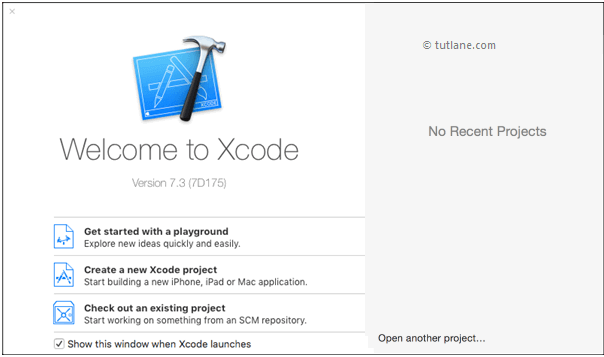
After selecting “Create a new Xcode project” a new window will open in that we need to choose a template.
The new Xcode window will contain several built-in app templates to implement the common types of iOS apps like page-based apps, tab-based apps, games, table-view apps, etc. These templates are having a pre-configured interface and source code files.
For this iOS Status Bar example, we will use the most basic template “Single View Application”. To select this one, Go to the iOS section on the left side à select Application à In the main area of dialog select “Single View Application” and then click on the next button like as shown below.
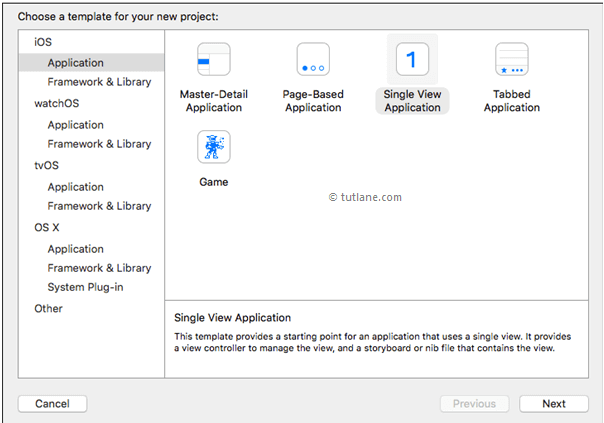
After click Next we will get a window like as shown below. In this, we need to mention the project name and other details for our application.
Product Name: “Status Bar in iOS”
The name whatever we enter in the Product Name section will be used for the project and app.
Organization Name: “Tutlane”
You can enter the name of your organization or your own name or you can leave it as blank.
Organization Identifier: “com.developersociety”
Enter your organization identifier in case if you don't have any organization identifier enter com.example.
Bundle Identifier: This value will generate automatically based on the values we entered in the Product Name and Organization Identifier.
Language: “Swift”
Select language type as “Swift” because we are going to develop applications using swift.
Devices: “Universal”
Choose Devices options as Universal it means that one application is for all Apple devices in case if you have any specific requirement to run an app only for iPad then you can choose the iPad option to make your application restricted to run only on iPad devices.
Use Core Data: Unselected
This option is used for database operations. In case if you have any database related operations in your application select this option otherwise unselect the option.
Include Unit Tests: Unselected
In case if you need unit tests for your application then select this option otherwise unselect it.
Include UI Tests: Unselected
In case if you need UI tests for your application then select this option otherwise unselect it.
Once you finished entering all the options then click on the Next button like as shown below.
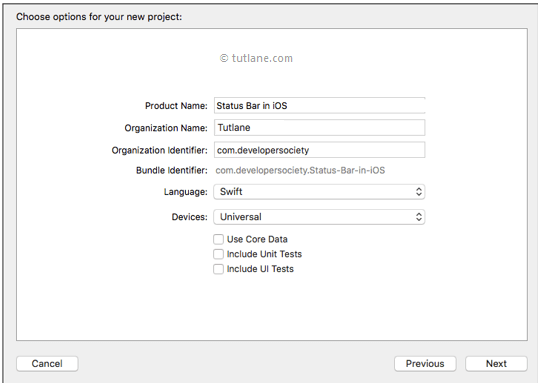
Once we click on Next button new dialog will open in that we need to select the location to save our project. Once you select the location to save project then click on Create button like as shown below.
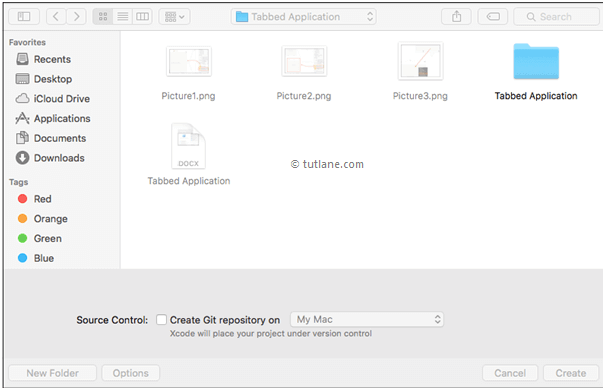
After click on Create button the Xcode will create and open a new project. In our project Main.storyboard and ViewController.swift are the main files which we used to design app user interface and to maintain source code.
Main.storyboard - Its visual interface editor and we will use this file to design our app user interface
ViewController.swift - It contains source code of our application and we use this file to write any code related to our app.
Now in project select Main.storyboard file the Xcode will open visual interface editor like as shown below.
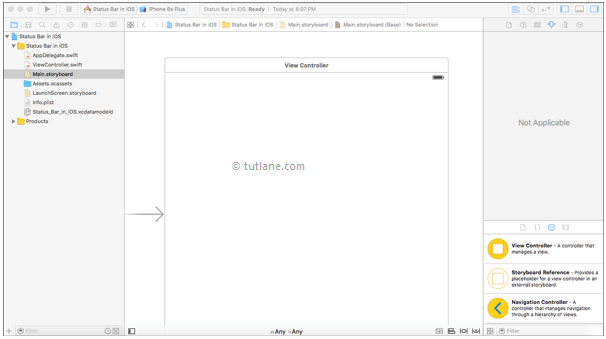
Now select ViewController.swift file in your project that view will be like as shown below.
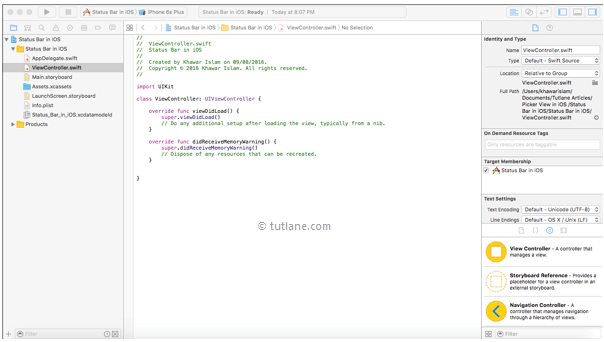
Now open ViewController.swift file and write a custom code to hide status bar when we run application.
// ViewController.swift
// Status Bar in iOS
// Created by Tutlane on 09/08/2016.
// Copyright © 2016 Tutlane. All rights reserved.
import UIKit
class ViewController: UIViewController {
override func viewDidLoad() {
super.viewDidLoad()
// Do any additional setup after loading the view, typically from a nib.
}
override func didReceiveMemoryWarning() {
super.didReceiveMemoryWarning()
// Dispose of any resources that can be recreated.
}
override func viewWillAppear(animated: Bool) {
super.viewWillAppear(true);
navigationController?.navigationBar.hidden = true
UIApplication.sharedApplication().statusBarHidden=true;
}
}
Now we will run and check the output of application. To run application, select the required simulator (Here we selected iPhone 6s Plus) and click on Play button, located at the top-left corner of the Xcode toolbar like as shown below.
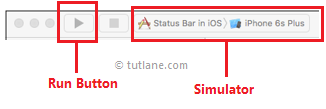
Following is the result of the iOS status bar application. If you check the following output our status bar has hidden when we run the application.
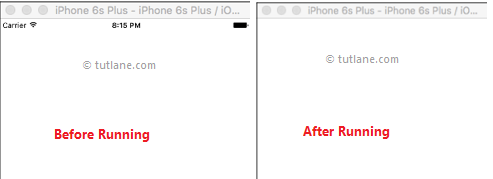
This is how we can use iOS ui status bar in our swift applications to show or hide or change the style of status bar based on our requirements.